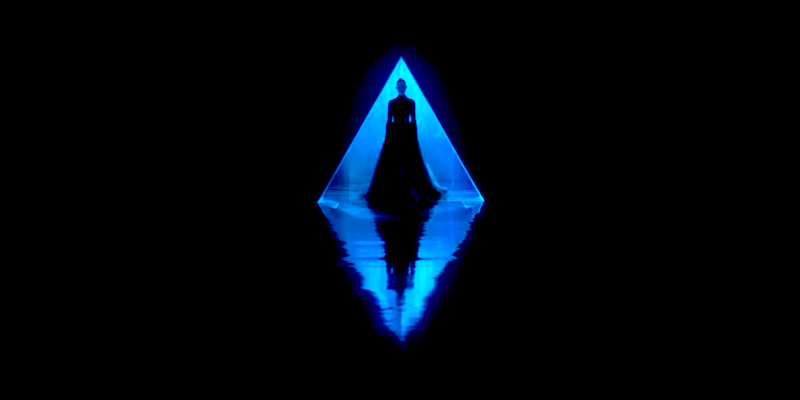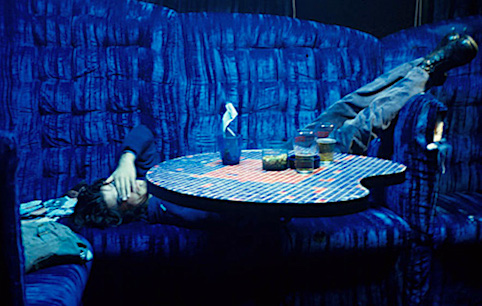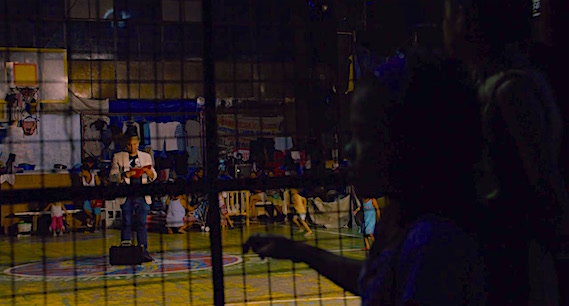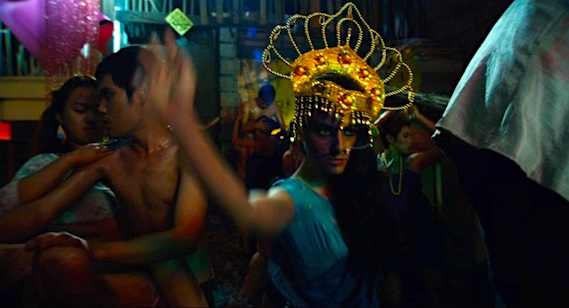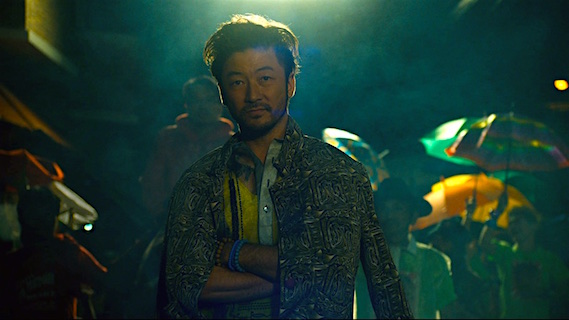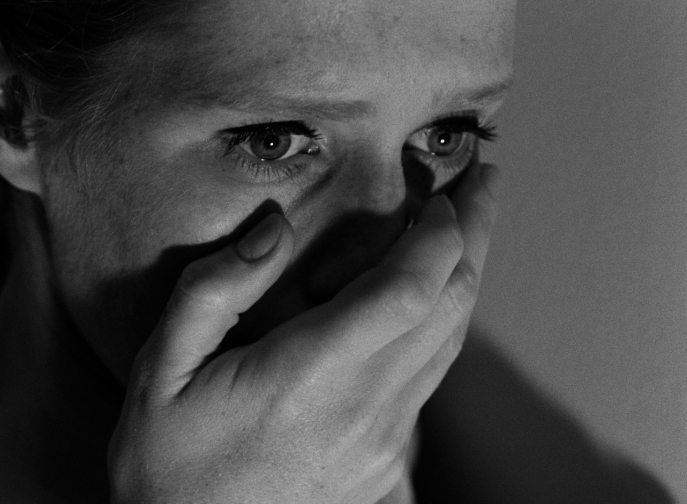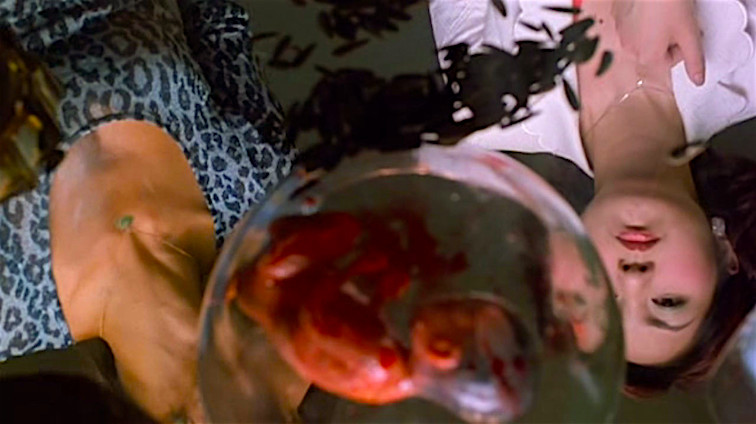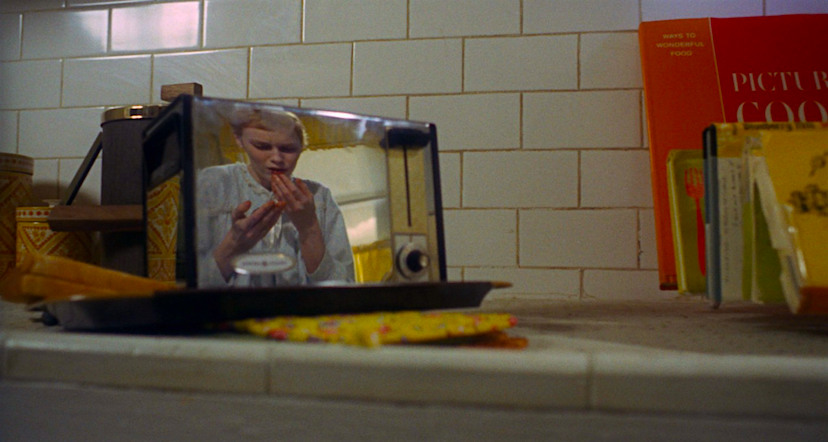Master cinematographer, Christopher Doyle, was asked to comment on the way neon lights and lighting have impacted his work. As as part of the online exhibition from Mobile M+ and NEONSIGNS.HK, he revisited some of the locations in which he and Kar-wai Wong filmed some of iconic work:
“The films we made at a certain period in the 80’s and 90’s wouldn’t be this way if it wasn’t for the space in which they were made…”

Beauty hides in the shadows…
Carina Lau
Days of Being Wild
Kar-wai Wong, 1990
Cinematography | Christopher Doyle
“…And our space is a neon space. It’s a light space. It’s a space of energy that is electric. It’s the way people move. It’s the energy of Hong Kong. It’s the excitement of the encounters on the street. And it’s lit by neon, basically. Especially at that time.”

Surviving in a Neon World
Tony Leung
Chungking Express
Kar-wai Wong, 1994
Cinematography | Christopher Doyle
“It’s a garish, exuberant possibly empty world if you’re not careful. I think that’s what neon is representing.” — Christopher Doyle, Filming in the Neon World.
For the full film/interview click here:

“Without any warning, she suddenly enters the store. I don’t know how long she’ll stay.”
Fallen Angels
Kar-Wai Wong, 1998
Cinematography | Christopher Doyle
Doyle’s work for Kar-wai Wong is some of the best cinematography one can ever expect to see. As he explains, it is exuberant — It is also erotic, unique, sensual, dangerous, disorienting and staggeringly beautiful. The shot posted above takes place in a space few of us would want to actually spend time. Much of Fallen Angels seems dirty and possibly even sinister, but eyes do not want to part with the visuals Doyle has captured. Less than a year later he would make his debut as a feature filmmaker. Away With Words featured one of Japan’s hottest actors, Tadanobu Asano, and an impossibly cool use of music. Most importantly, it was visually amazing. The images of Away With Words imprinted on my brain. Sadly Doyle’s movie was never lucky enough to receive adequate distribution. But for those of us who did see it — the movie lives on.

The criminally neglected and forgotten…
Tadanobu Asano
Away With Words / San tiao ran
Christopher Doyle, 1999
The world contained within Away With Words is magically infused with neon light. The movie actually seems to radiate much of the time. This film can still be found via DVD, though it has never received a proper transfer. It is still worth seeing. It is also almost impossible to find any screenshots that do it justice. I must disclose that Christopher Doyle is my favorite cinematographer. For me to write this is a big deal. I love cinematography and there are many artists I admire — but it is usually hard for me to pick out one artist above all others. I do not have this problem when it comes to cinematography. No one shoots a film like Mr. Doyle.

“Turns out that lonely people are all the same.”
Leslie Cheung and Tony Leung
Happy Together
Kar-wai Wong, 1997
Cinematography | Christopher Doyle
The use of neon lighting for film has been going on for some time. It’s seem obvious that lighting is as key to a movie as editing, but it is far more complex than simply providing enough light to capture an image. Lighting allows the filmmaker and cinematographer to not only guide but to literally shape a film’s meaning. Cinematography incorporates all essential elements to form the essence of a movie. When one thinks of neon lighting for film, it would seem it best for creating either a sterile environment or a world of shadows with the intention of menace or horror. But the use of neon lighting is almost limitless in what it can convey. It all depends on how well the cinematographer understands lighting, is able to collaborate with lighting technicians and how creative he/she is in bringing a personal vision that highlights the essential one belonging to the film’s director.

Gallo horror has never been more beautiful or surreal. This is the perfect example of a great cinematographer.
Jessica Harper suspects witchery.
Suspiria
Dario Argento, 1977
Cinematography | Luciano Tovoli
Argento’s Suspiria is a neon lit nightmare. Luciano Tovoli’s camera gives the gratuitous violence and paranormal horrors a sinister sort of beauty without getting in Argento’s way. The cinematographer works for the director, but he/she can bring forth magic that the director is often only able to imagine.
In a passive chronological order, take a look at the following shots that incorporate The Neon World into the frames and meanings of the respective films.
Bailey’s use of neon reds and blacks is the perfect concept for dark eroticism and ever-present danger and paranoia.

Neo-Noir / Neon-Noir meets The Beautiful / The Dangerous
Rutger Hauer
Blade Runner
Ridley Scott, 1982
Cinematography | Jordan Cronenweth
I was too young when I first saw Blade Runner to be able to own the language of film, but when I noticed it was referred to as “Neo-Noir” I do remember thinking “Neon-Noir” seemed more sensical. A few years later I would begin to make the connection. I still like the term “Neon Noir” even if it isn’t real.
Michael Mann had great luck bringing the neon world to Thief, but the same can’t be said for One From The Heart. Even still, it is a beautiful looking mess of a movie.

Suppose you had Tom Waits create an amazing score and perfected visuals to a neon-infused glow — and nobody came to see it?
Nastassja Kinski glowing…
One From The Heart
Francis Ford Coppola, 1982
Cinematography | Vittorio Storaro /
Ronald Víctor García
Tony Scott’s The Hunger is seamlessly beautiful — the film’s opening moments/credits are unforgettable and immediately set the stage. Shadowed, cool, stylish and throbbing with electricity and hyper eroticism — this world is beguiling, but we all know that Bela Lugosi’s Dead.

“Nothing human loves forever…”
Peter Murphy
The Hunger
Tony Scott, 1983
Cinematography | Stephen Goldblatt
Ken Russell may have not had a big budget, but he understood how he exactly how he wanted to capture China Blue’s surreal world of fantasy, cheap thrills and escape. Dick Bush was a master, but it was usually his director’s who pushed him forward. And he never failed them.

Welcome to the Neon Surrealism of Ms. China Blue…
Kathleen Turner
Ken Russell, 1984
Cinematography | Dick Bush
Wim Wender’s Paris Texas seems an odd fit for utilizing the idea of a Neon-drenched world, but Robby Muller brings the idea to glorious use more than a couple of times within Wender’s concept.

There is distinct beauty and sadness in every shot…
Paris Texas
Wim Wenders, 1984
Cinematography | Robby Muller
David Lynch’s collaborations with the great Frederick Elmes never fail to seduce, hypnotize and repulse. Blue Velvet is a classic example of Neo-Noir …and Neon-Noir Surrealism.

This is not your grandparents Film Noir…
Isabella Rossellini
Blue Velvet
David Lynch, 1986
Cinematography | Frederick Elmes
Finding the image from Paul Verhoeven’s Basic Instinct was not as easy as I had expected. Most remember this film for Sharon Stone’s brave and no-hold-barred performance (and flash!) but I always think of that amazing scene where the detective enters a raving dance club to find his Femme Fatale. This is not a good example of the way Jan de Bont was able to capture the electric energy of this nightclub, but you can get the general idea. It was too masterful to leave out.

Forgive the poor quality image, but lighting intensity adds to the protagonist’s adrenaline rush as he navigates a San Francisco night club.
Basic Instinct
Paul Verhoeven, 1992
Cinematography | Jan de Bont
Michael Mann had already established a magical sort of neon energy for the protagonist of Thief, but he found new ways to utilize it for the visually dazzling, HEAT.

A familiar story is captured in brilliant moments of light, shadow, form and reflection.
HEAT
Michael Mann, 1995
Cinematography | Dante Spinotti
Terry Gilliam and Nicola Pecorini bring neon, chaos, paranoia and delirium to Las Vegas of the late 1960’s.

The neon glow of Vegas seeps into the hotel rooms, desert and a drug fueled mind.
Fear and Loathing in Las Vegas
Terry Gilliam, 1998
Cinematography | Nicola Pecorini
Skipping ahead a few years and even Jason Statham gets the neon touch…

“Now I go back to the street and disappear.”
This spaces of this Neon World threaten with lighted colors.
Jason Statham
Steven Knight, 2013
Cinematography | Chris Menges
Yorick Le Saux adds a whole new context of meaning to Jim Jarmusch’s already cool vampiric world…

Love, Marriage and devotion in a world of neon light.
Tilda Swinton and Tom Hiddleston
Only Lovers Left Alive
Jim Jarmusch, 2013
Cinematography | Yorick Le Saux
Just as one should never attempt to mention neon lighting in film without a discussion of Christoper Doyle’s masterful work — it would be tragic to not highlight Benoit Debie’s cinematography. Harmony Korine has always been astute regarding his cinematic visions, but Debie brings a hue to Spring Breakers that only he could create.

Teen rebellion and rape culture are satirized in a fusion of neon and electrified dub-steps…
Spring Breakers
Harmony Korine, 2012
Cinematography | Benoit Debie
The critics may have dismissed Ryan Gosling feature film directorial debut, but I still contend they were wrong. If nothing else, Benoit Debie added neon drenched meanings, mystery and surreal horrors forward in Lost River. The film is not perfect, but it arches forward in simultaneously borrowed but eccentric uniqueness. In its own way, Lost River, if almost brilliant. This is no one’s standard coming of age movie.

“Live” Adult Entertainment takes a very glowing dark turn…
Eva Mendes
Lost River
Ryan Gosling, 2014
Cinematography | Benoit Debie
Just as Christopher Doyle will forever be linked with Kar-wai Wong — so will Benoit Debie with Gaspar Noe. It is a supreme compliment to both directors that they have been able to collaborate so beautifully with two distinctly brilliant cinematographers. While all four are linked respectively together — Wong and Noe have never been hesitant to share the credit for the power of the fieldwork.
Strong case in point, Noe actually shares cinematography credit with Debie for Irreversible. It says a great deal that I am never sure who is behind the camera in this deeply disturbing film. Irreversible is a remarkable work of cinematic art, but it is almost as problematic. One thing is most certain, the quality of the camerawork and use of lighting can only be praised. Even if you have opted to not put yourself through the inhumane horrors of this film — I suspect you will recognize this image.

Neon lighting radiates sinister energy as Monica Bellucci leads the camera to one of the most disturbing and controversial scenes of sexual violence ever put to film…
Irreversible
Gaspar Noe, 2002
Cinematography | Benoit Debie
And when it comes to the power of neon lighting within the context of filmmaking, one would be hard pressed to think of a better example than Gaspar Noe’s Enter The Void. Intentionally a trip of a film experience, Benoit Debie’s mark is ever-present.
And while Love may not be much of a movie, it is often amazing to watch for visuals alone. Once again, Debie infuses neon light throughout.

The Neon replaces the passion and thrills of romance and sexual release…
Karl Glusman and Aomi Muyock
Love
Gaspar Noe, 2015
Cinematography | Benoit Debie
And if there is one director who has spent a career studying and utilizing neon for filmmaking it would be Nicolas Winding Refn. Even under the constraint of a limited budget, his focus was on capturing the energy, insanity and terror of the drug underworld via lighting. The Pusher Trilogy shows what a skilled artist can do with very little.

Burning the image to neon is not new to Mr. Refn
PUSHER
Mads Mikkelsen
Nicolas Winding Refn, 1996
Cinematography | Morten Soborg
The film itself may be flawed, but Fear X is of note because it marks the first collaboration between Refn and Larry Smith. Paranoia, fear, rage, mystery and horror benefit from a very neon-ed space.

Accidental Death or murder? These spaces offer menacing paranoia.
John Turturro
Fear X
Nicolas Winding Refn, 2003
Cinematography | Larry Smith
2008’s Bronson is a cinematic marvel on more than a few counts — one of them is the way in which Larry Smith pushes neon to the limits to merge reality with the fantasy of Surrealism.
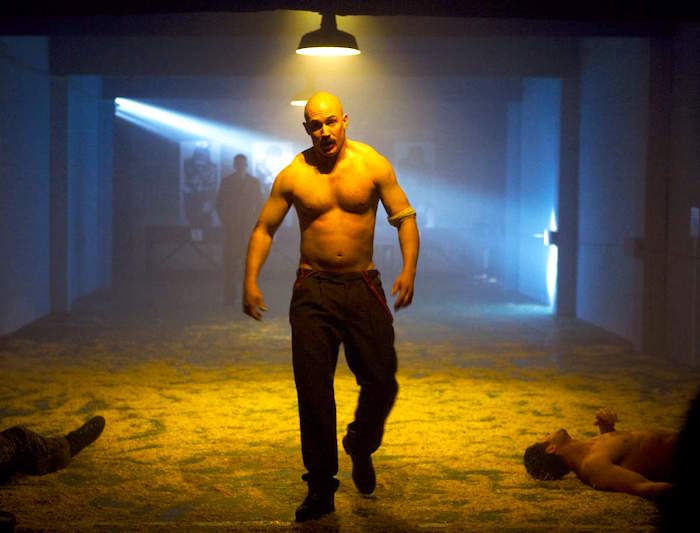
Realism, Surrealism, Desire, Isolation and fantasies bleed to form a life trapped in a neon-glow.
Tom Hardy
BRONSON
Nicolas Winding Refn, 2008
Cinematography | Larry Smith
Nicolas Winding Refn and Larry Smith use Drive to serve as the perfect synthesis of their shared vision. It is all about style and manipulation of light.
The envelope got pushed off the table and then blown toward the door for their next collaborative effort, Only God Forgives. While it is not a perfect movie, it is certainly not the flop that so many critics wanted us to believe. Only God Forgives is a metaphorical nightmare that often looks more animated than real. Odd and completely unforgettable — another exorcise in style and manipulation.

“Time to meet The Devil.”
Bathed in Neon, Kristin Scott Thomas isn’t worried.
Nicolas Winding Refn, 2013
Cinematography | Larry Smith
Sadly Larry Smith was not involved in Mr. Refn’s next experiment, but it is unlikely that Refn would have budged even the slightest. The title says it all. The Neon Demon is a cinematic error. This time Refn didn’t even bother to push the envelope. He simply refused to acknowledge that an envelope existed. Beautiful, seductive, twisted and so cool it is almost frozen — The Neon Demon stands indignant and absolutely lost in the garishness of its own neon glow.

And, cue the tipping point…
The Neon Demon
Elle Fanning
Nicolas Winding Refn, 2016
Cinematography | Natasha Braier
Jenna Malone is the only actor who manages to walk away unscathed. Of course this Demon is so very neon, we sometimes can hardly see her.

Neon lighting so deep we can barely see it. This might be a good thing.
Jenna Malone is full of beauty…
The Neon Demon
Nicolas Winding Refn, 2016
Cinematography | Natasha Braier
It may not work, but Natasha Braier is certainly up for the challenges her director presents.
Matty Stanfield, 9.20.2016






